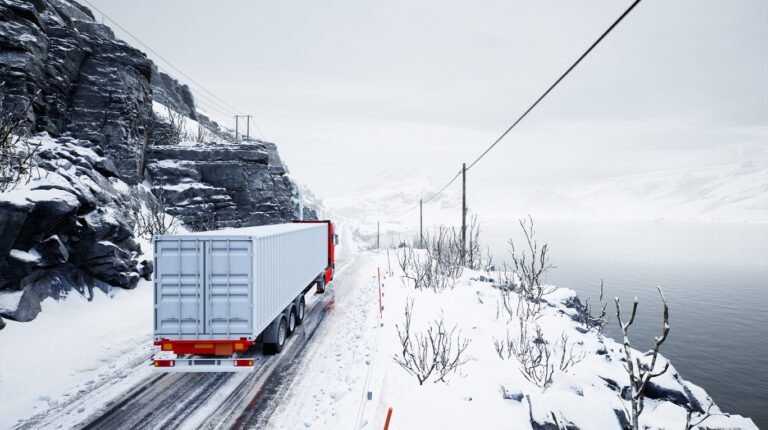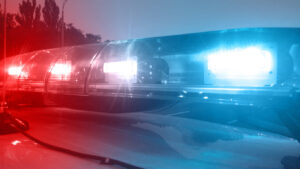HARRISBURG, PA — Ahead of anticipated winter weather across much of Pennsylvania tomorrow, the Pennsylvania Department of Transportation (PennDOT) is advising motorists to avoid unnecessary travel during the storm and to exercise caution when driving.
According to the National Weather Service, a powerful Arctic cold front will sweep across the Great Lakes today and into the Northeast early Thursday. Expect brief, intense bursts of heavy snowfall and gusty winds. Widespread strong winds will spread from the Northern Plains to the Great Lakes today and reach the Central Appalachians, Mid-Atlantic, and Northeast by Thursday, where some blizzard conditions are expected in the Appalachians
According to a media release, PennDOT will implement various speed and vehicle restrictions throughout the storm.
PennDOT crews will actively pre-treat roadways where necessary ahead of the storm to help prevent ice from forming a bond with the pavement during the early stages of a storm. However, salt does not resolve all risks, and drivers may encounter icy spots on the roadway. With freezing temperatures, roads that look wet may actually be icy, and extra caution is needed when approaching bridges and highway ramps where ice can form.
Restrictions are planned for certain vehicles during the storm, and will be communicated via variable message boards, the 511PA traveler information website and smartphone apps. Motorists can also sign up for personalized alerts on the website.
The following vehicle restrictions are planned to go into effect at 12:01 AM on Thursday, December 5, in accordance with the commonwealth’s weather event vehicle restriction plan. Restrictions will be lifted as quickly as possible when conditions are safe.
- Tier 2:
- Interstate 80 from the Ohio border to mile marker 173 (Lamar exit, Route 64).
- Tier 3:
- I-90, entire length.
- I-86, entire length.
- I-79, north of I-80.
Under Tier 2 restrictions, the following vehicles are not permitted on affected roadways:
- Tractors without trailers.
- Tractors towing unloaded or lightly loaded enclosed trailers, open trailers or tank trailers.
- Tractors towing unloaded or lightly loaded tandem trailers.
- Tractors towing loaded tandem trailers without chains or Alternate Traction Devices (ATDs).
- Enclosed unloaded or lightly loaded cargo delivery trucks/box trucks that meet the definition of a CMV.
- Passenger vehicles (cars, SUV’s, pickup trucks, etc.) towing trailers.
- Recreational vehicles/motorhomes.
- School buses, commercial buses and motor coaches, regardless of the availability of trains or ATDs.
- Motorcycles.
Tire chains or ATDs do not need to be installed under Tier 2 restrictions but need to be readily available for use should the vehicle become stuck and not be able to move because of poor traction.
On roadways with Tier 3 restrictions in place, no commercial vehicles are permitted EXCEPT loaded single trailers with chains or approved Alternate Traction Devices. Additionally, all school buses, commercial buses, motor coaches, motorcycles, RVs/motorhomes and passenger vehicles (cars, SUVs, pickup trucks, etc.) towing trailers are not permitted on affected roadways while restrictions are in place.
On roadways where vehicles are not restricted, commercial vehicle drivers in particular are encouraged to exercise caution in high winds. Drivers should ensure their loads are secure, reduce speeds, increase following distance, and use flashers if necessary.
Drivers always should be alert for sudden squalls which can strike with little or no warning and quickly cause roads to become snow covered. Heavy squalls also can cause whiteout conditions, virtually eliminating a driver’s visibility. Additionally, falling temperatures and blowing and drifting snow can cause icy areas on roadways, including overpasses and bridges. The National Weather Service issues Snow Squall Warnings to alert motorists of potentially hazardous travel. If you receive a Snow Squall Warning, delay travel or exit the highway at the next opportunity.
While avoiding or delaying unnecessary travel during winter storms is the safest choice, PennDOT offers this advice if motorists must travel and encounter snow squalls or blowing or drifting snow:
- Slow down gradually and drive at a speed that suits conditions.
- Turn on your headlights. If caught in a snow squall, turn on your hazard lights.
- Stay in your lane and increase your following distance.
- Stay alert, keep looking as far ahead as possible and be patient.
- Do not drive distracted; your full attention is required.
- Use your defroster and wipers
- Keep windows and mirrors free of snow and ice.
- During whiteouts, come to a complete stop only when you can safely pull off the roadway.
- Do not stop in the flow of traffic since this could cause a chain-reaction collision.
- Do not pass a vehicle moving slowly or speed up to get away from a vehicle that is following too closely.
- Always buckle up and never drive impaired.
When winter weather occurs, drivers should extra cautious around operating snow-removal equipment. When encountering a plow truck, drivers should:
- Stay at least six car lengths behind an operating plow truck and remember that the main plow is wider than the truck.
- Be alert since plow trucks generally travel much more slowly than other traffic.
- When a plow truck is traveling toward you, move as far away from the center of the road as is safely possible, and remember that snow can obscure the actual snow plow width.
- Never try to pass or get between several trucks plowing side by side in a “plow train.” The weight of the snow thrown from the plow can quickly cause smaller vehicles to lose control, creating a hazard for nearby vehicles.
- Never travel next to a plow truck since there are blind spots where the operator can’t see, and they can occasionally be moved sideways when hitting drifts or heavy snowpack.
- Keep your lights on to help the operator better see your vehicle. Also remember that under Pennsylvania state law, vehicle lights must be on every time a vehicle’s wipers are on due to inclement weather.
Last winter in Pennsylvania, preliminary data shows that there were 151 crashes resulting in three fatalities and 55 injuries on snowy, slushy or ice-covered roadways where aggressive-driving behaviors such as speeding or making careless lane changes were factors.
The Pennsylvania State Police offers this advice if you are involved in a crash:
- First and foremost, move your vehicle as far as possible from the travel lanes if it’s able to be driven. Remaining in the lanes of travel when your vehicle can be driven is extremely dangerous.
- If your vehicle or another involved vehicle is not able to be driven due to damage, or if one of the involved parties is injured, PA law requires the crash be reported to police. Do this by dialing 911 right away.
- If your vehicle is disabled in the lane of travel or stuck in the travel lanes due to snow or ice, remain inside the vehicle with your seatbelt on and hazard lights activated. If it’s not safe to remain inside your vehicle, assess the situation and get yourself and passengers to a place of safety such as behind a barrier or guardrail. When exiting your vehicle, move as quickly as possible and DO NOT remain in the travel lanes or near your vehicle.
- When encountering a crash scene, the law requires you to move over if possible and always slow down. First responders will be active at the scene and focused on helping those involved in the crash and getting the road back open.
The law requires drivers to remove accumulated ice or snow from their vehicle, including the hood, trunk, and roof within 24 hours after the storm has ended. This applies to all vehicles, including commercial vehicles. Drivers in violation of the law are subject to a fine of $50. Additionally, drivers can be cited up to $1,500 if snow or ice is dislodged and strikes another vehicle or pedestrian causing death or serious injury.
Motorists should prepare for potential wintry weather by ensuring they have supplies in their cars before heading out: food, water, blankets, extra gloves and hats, cell phone charger, hand or foot warmers, windshield brush and scraper, and any specialized items like medications or baby and pet supplies.
For more information on safe winter travel, an emergency kit checklist and information on PennDOT’s winter operations including a video, visit www.PennDOT.pa.gov/winter. Additional winter driving and other highway safety information is available at www.PennDOT.pa.gov/safety.
Motorists can check conditions on more than 40,000 roadway miles, including color-coded winter conditions on 2,900 miles, by visiting www.511PA.com. 511PA, which is free and available 24 hours a day, provides traffic delay warnings, weather forecasts, traffic speed information, and access to more than 1,000 traffic cameras.
511PA is also available through a free smartphone application for iPhone and Android devices, by calling 5-1-1, or by following local alerts on X.
Subscribe to statewide PennDOT news and traffic alerts or subscribe to news in a specific county or region. Find PennDOT news on X, Facebook, and Instagram.














